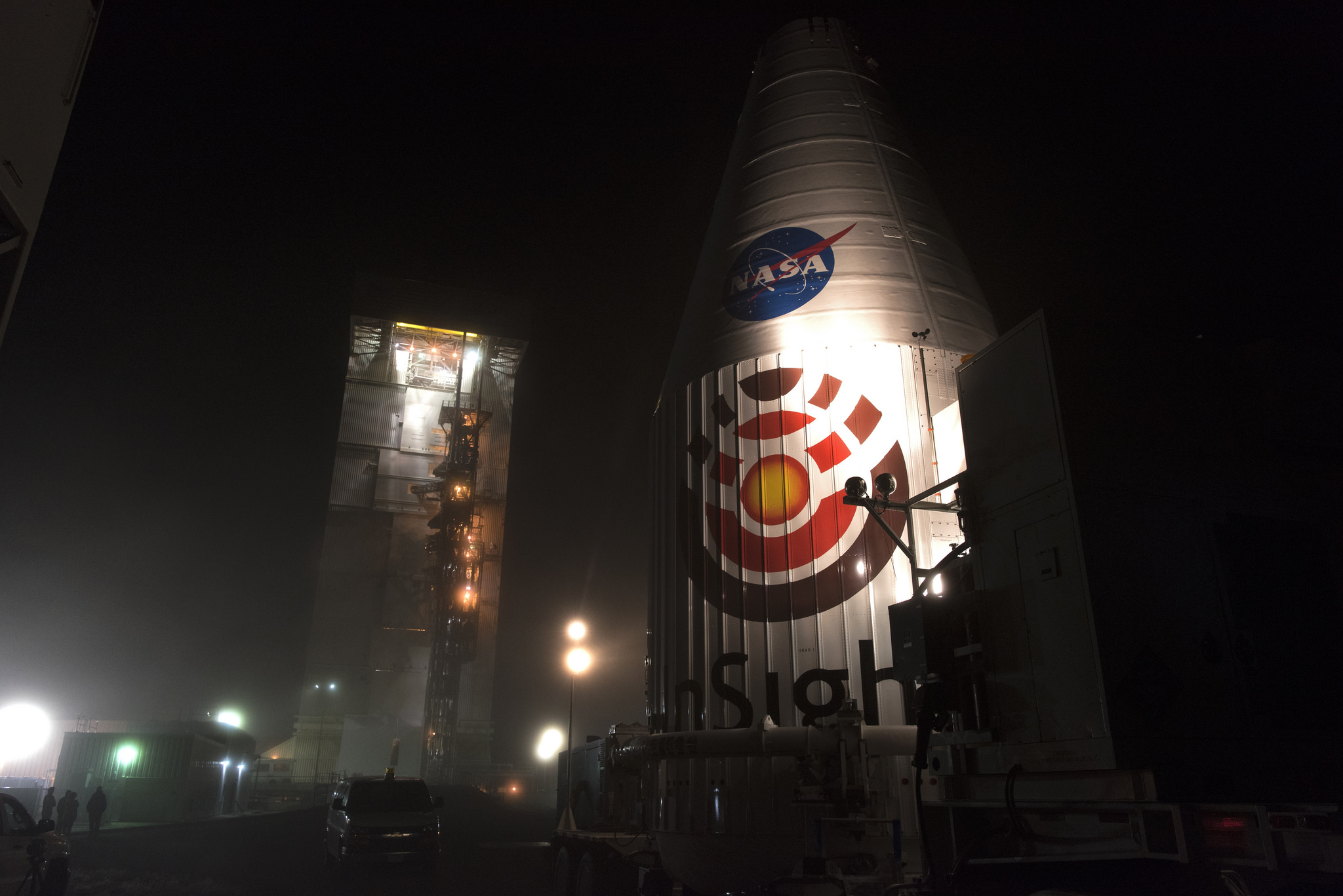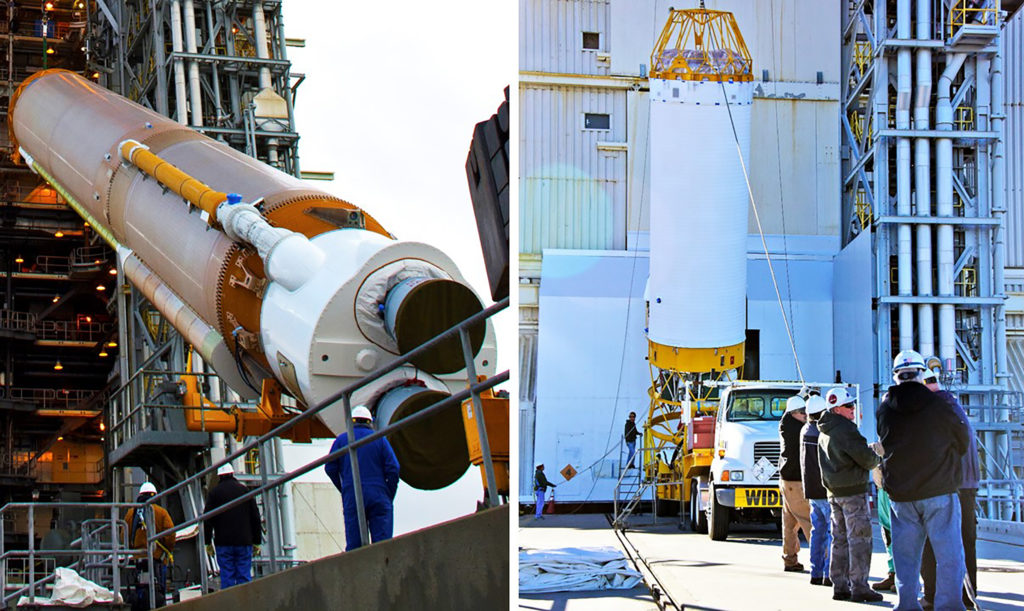

NASA’s next Mars lander is one significant step closer to beginning its journey. Secured inside its payload fairing, the agency’s Interior Exploration using Seismic Investigations, Geodesy and Heat Transport (InSight) spacecraft was transported from the Astrotech facility to Space Launch Complex 3 at Vandenberg Air Force Base in California.
The payload fairing was hoisted up inside the Vertical Integration Facility and attached to the United Launch Alliance Atlas V rocket. Liftoff is scheduled for May 5, 2018.
InSight will be the first mission to look deep beneath the Martian surface. It will study the planet’s interior by measuring its heat output and listening for marsquakes. InSight will use the seismic waves generated by marsquakes to develop a map of the Red Planet’s deep interior. The resulting insight into Mars’ formation will provide a better understanding of how other rocky planets, including Earth, were created.
NASA’s Jet Propulsion Laboratory in Pasadena, California, manages the InSight mission for the agency’s Science Mission Directorate. InSight is part of NASA’s Discovery Program, managed by its Marshall Space Flight Center in Huntsville, Alabama. The spacecraft, including cruise stage and lander, was built and tested by Lockheed Martin Space in Denver. Several European partners, including France’s space agency, the Centre National d’Étude Spatiales, and the German Aerospace Center, are supporting the mission. United Launch Alliance of Centennial, Colorado, is providing the Atlas V launch service. NASA’s Launch Services Program, based at its Kennedy Space Center in Florida, is responsible for launch management.

 At Vandenberg Air Force Base in California, the United Launch Alliance Atlas V booster and Centaur upper stage are lifted for positioning on the launch pad at Space Launch Complex 3. The rocket will launch NASA’s Interior Exploration using Seismic Investigations, Geodesy and Heat Transport, or InSight, spacecraft for its trip to Mars.
At Vandenberg Air Force Base in California, the United Launch Alliance Atlas V booster and Centaur upper stage are lifted for positioning on the launch pad at Space Launch Complex 3. The rocket will launch NASA’s Interior Exploration using Seismic Investigations, Geodesy and Heat Transport, or InSight, spacecraft for its trip to Mars.